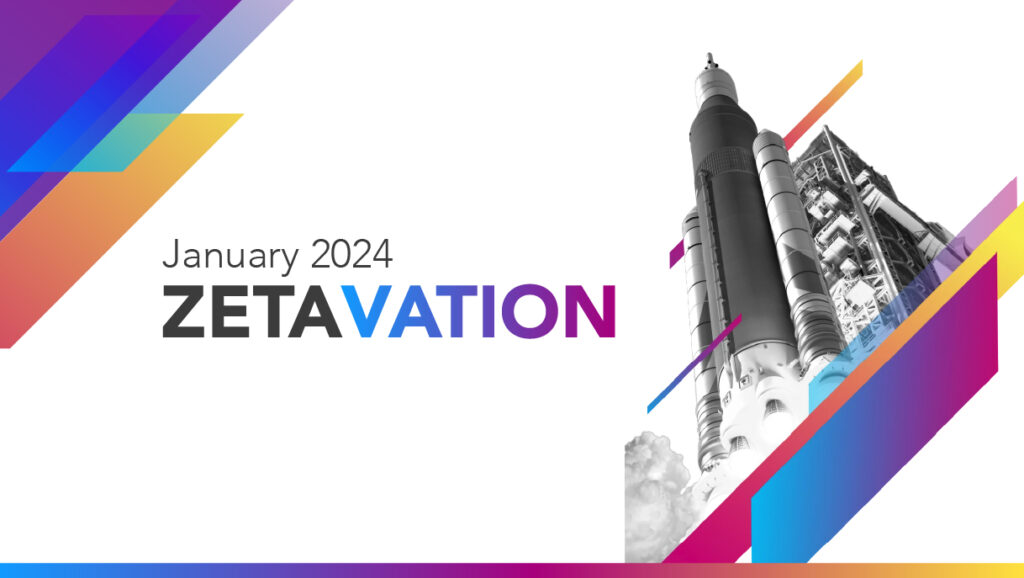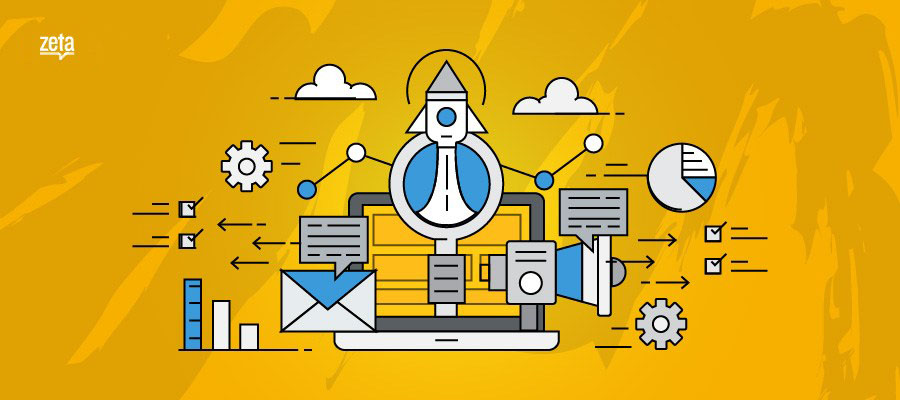
Using Email Campaigns to Win at Lifecycle Marketing (With Examples)
There was a time when marketing was focused mainly at acquiring new customers. Marketing strategies aimed at retaining existing ones usually took the backseat since competition was relatively low. Brands used to take it for granted that their customers won’t jump ships unless there was a serious issue with their product/service. But times have changed now. The digital revolution has made it easier than ever for the customers to search and find newer alternatives. And that’s why brands of today have to focus on engaging their customers throughout their lifecycle. From awareness and consideration to selection and buying; brands should be connected with the customers during every stage. The activities and strategies that marketing teams employ to educate, acquire and retain their customers constitute lifecycle marketing. In this article, we’re going to see how email marketing plays an important role in different stages of a customer’s lifecycle.
Different types of lifecycle emails
We can segment the different types of lifecycle emails into 3 major buckets:
- Awareness Emails
- Knowledge and consideration emails
- Retention emails
Relevant read: Building Customer Loyalty With a Winning Welcome Email Series
1. Awareness Emails
These are email communications which are aimed at making the customer aware about the brand’s products/services. Businesses can shoot out a variety of emails to achieve this and here are a couple of examples:
1.1 Getting started/Welcome emails
The welcome email is the first communication that a brand does with its customers after selling its product/service. It should be actionable, informative and clear.
The welcome email by book recommendation platform Goodreads is a good example for a simple and effective welcome email:
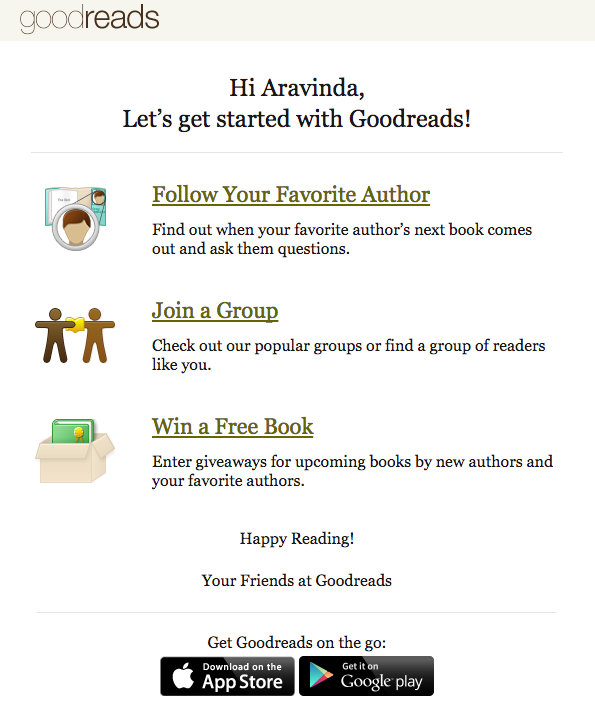
1.2 Tutorial emails
The success of a product/service depends on how well the customers can use them to achieve their goals. And that’s the aim of tutorial emails. The tutorial can be a video, a blog post, a knowledge base article or even a webinar.
Task management platform Asana does it well in this email:
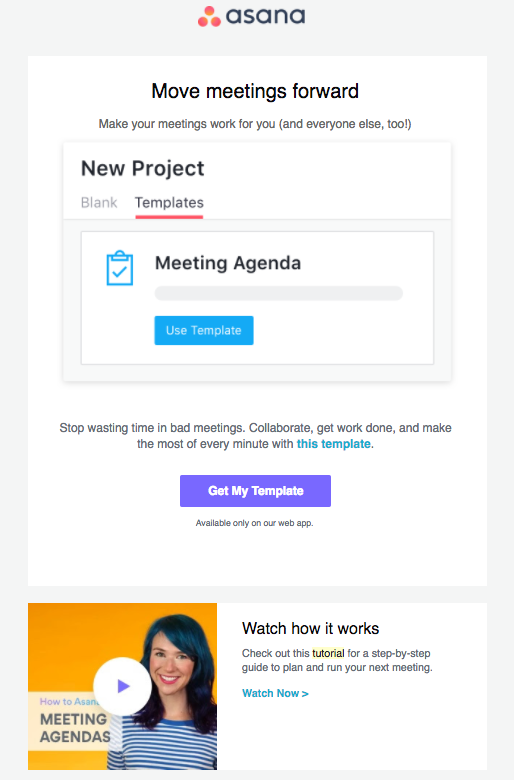
2. Knowledge and consideration emails
These are email communications which are aimed at educating the customers about different aspects of a product/service. Special offers and discounts can also be sent to customers to increase the chances of them considering the purchase.
2.1 Nudge emails
Nudge emails can come in handy when you want to push the customers into using the different features and getting used to them. They should ideally be set for every prospective customer who isn’t using the product/service as much as he/she should.
This email by customer communication platform Sendgrid does a good job in nudging the customer to try out a new feature that they launched. This email was sent to all of their prospective customers who had downloaded their ebooks or were subscribed to their blog newsletter:
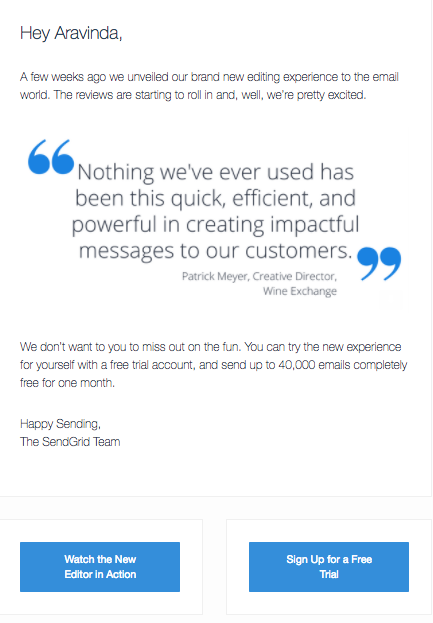
2.2 Free trial ending
Sometimes you take the free trial of a product and almost forget about it after the need fades away from the top of your head. In the hustle and bustle of today’s busy lives, most people try out multiple products/services everyday without actually trying them all. To nudge such users to take the next step, free trial ending emails can be highly effective.
Good read: The Art of Customer Onboarding using Email Nurturing
Social media assistant app Beatrix doe a good job in this ‘free trial ends’ email:
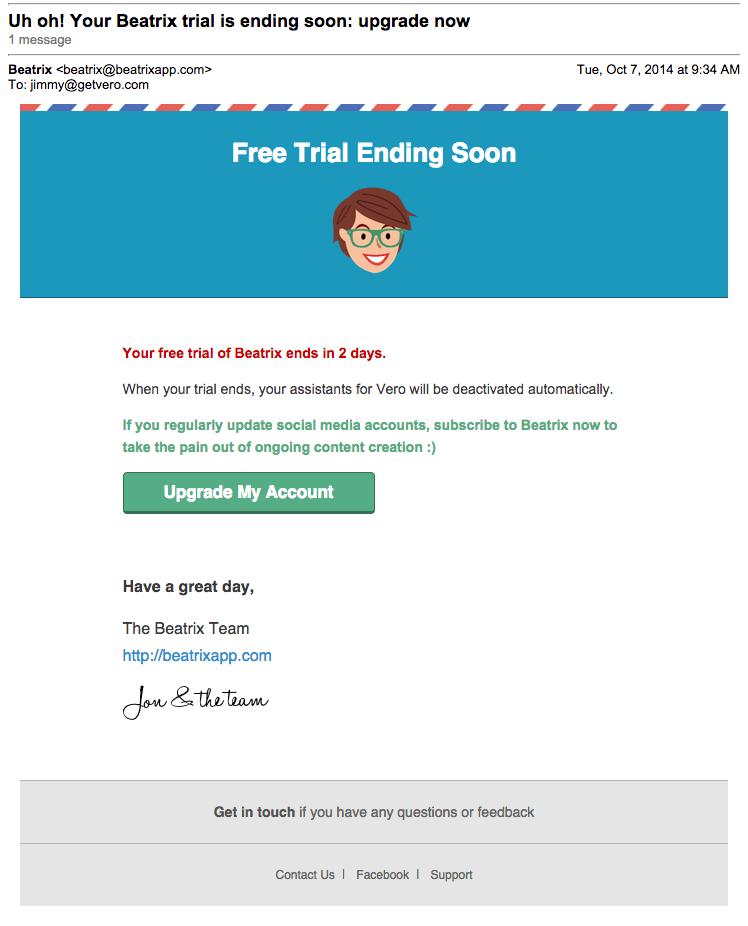
2.3 Special offer
Special offers and discounts are always effective in pushing doubtful customers to try out a product/service. The special offers can be just a reduction in cost or discount coupons for other relevant products/services.
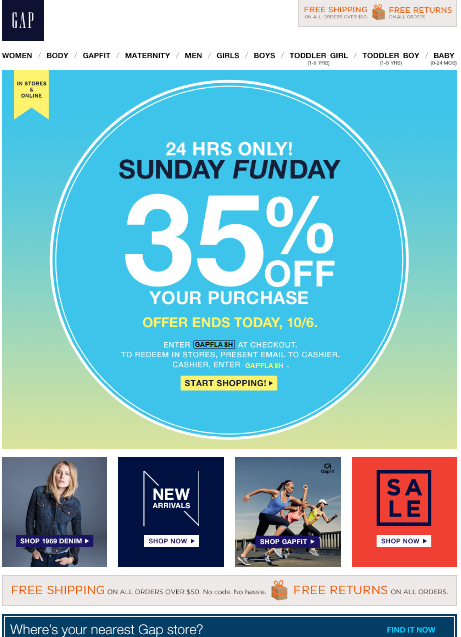
3. Retention emails
Retention marketing has started gaining momentum in the last decade or so, ever since the world witnessed a boom in the ecommerce space. Marketing teams of today tend to have a strong focus on getting repeat business from customers who are familiar with the products/services. And studies have repeatedly shown that repeat customers add more value to the bottom lines of businesses across different verticals. The central goal of retention marketing is to keep customers engaged even after their purchase.
3.1 Newsletter emails
Newsletters is arguably the easiest way to stay in touch with customers. A weekly/monthly newsletter that talks about all that happened during that week/month is a great way to remind the customers that you still remember them and want them to be a part of your journey.
Product design platform InVision does a neat job with its newsletter:

3.2 Upsell emails
Upselling refers to techniques used by businesses to persuade their customers to purchase similar but more expensive items, upgrades or other add-ons to make a more profitable sale. Email is arguably the most effective way to upsell since it gives marketing an opportunity to explain the benefits of an upsell without sounding too salesy.
Must read: The Art of Upselling and Cross-selling to Your Customers Using Marketing Automation
Dollar shave club’s email is a great example for subtle upselling. Without being too salesy or forceful, it just points out the extra benefits that its other plans have to offer:
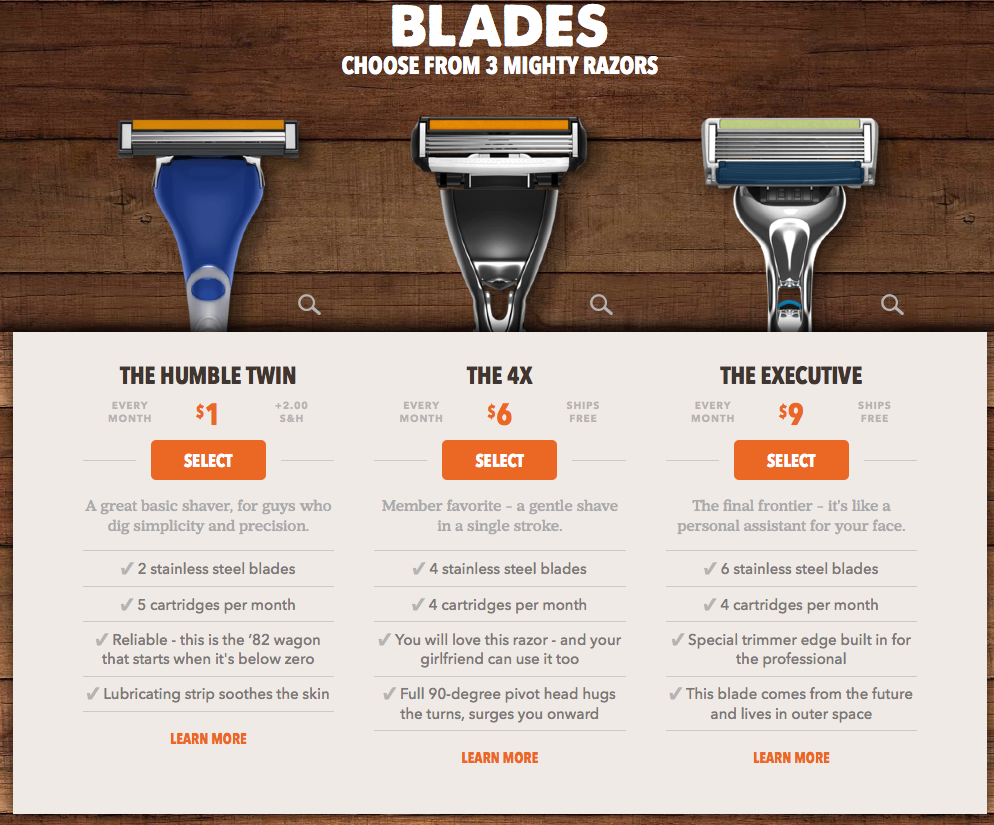
Wrap up
What is your take on lifecycle marketing? Do you think email is the most effective way to do it? Or is it just one of the many ways and doesn’t really warrant a special place in lifecycle marketing strategies? Let us know what you think in the comments below.


